/research
roll over images for information
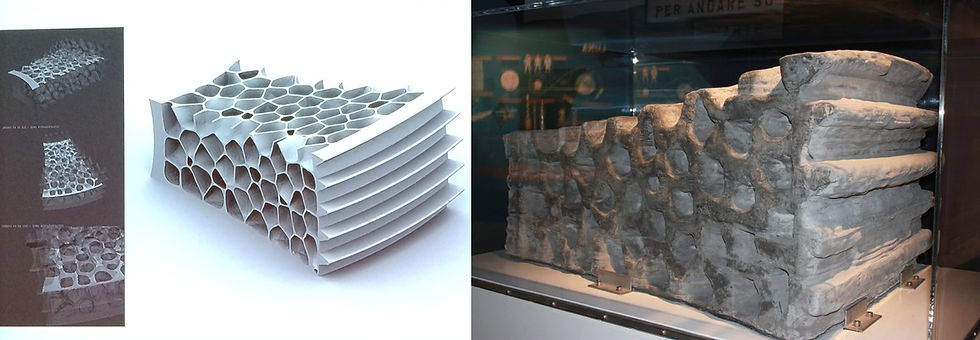
On the left a 3D simulation of how the printed shield structure should look like. On the right the piece of shield printed with a lunar soil simulant (vulcano material from earth). 1
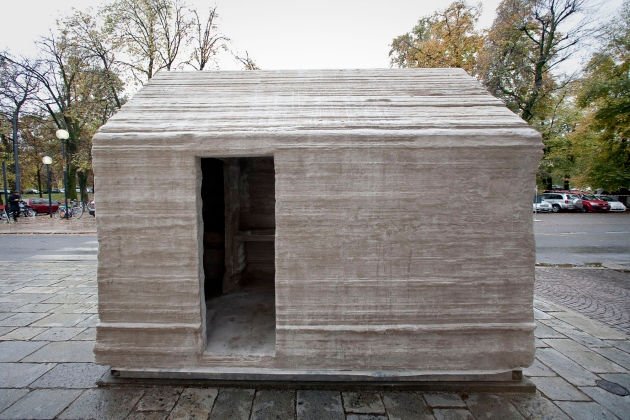
The timing of construction of the prototype required a period of 14 working days and it was necessary to utilize a special 35 cubic meters of sand mixed, of which 90% was recovered for subsequent prints. 2

The timing of construction of the prototype required a period of 14 working days and it was necessary to utilize a special 35 cubic meters of sand mixed, of which 90% was recovered for subsequent prints. 3

The MX3D-Metal method combines a robotic arm typically used in car manufacturing with a welding machine to melt and then deposit metal, to create lines that can be printed horizontally, vertically, or in curves without the need for support structures.

The MX3D-Metal method combines a robotic arm typically used in car manufacturing with a welding machine to melt and then deposit metal, to create lines that can be printed horizontally, vertically, or in curves without the need for support structures.
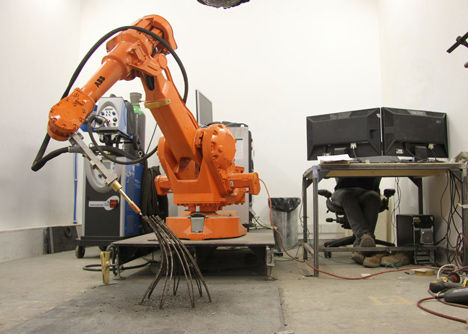
The MX3D-Metal method combines a robotic arm typically used in car manufacturing with a welding machine to melt and then deposit metal, to create lines that can be printed horizontally, vertically, or in curves without the need for support structures.

The structure of the pavilion was based on their research into the complex layers and load-bearing efficiency of a lobster's exoskeleton, which is made up of layers of chitin – a derivative of glucose – embedded in a protein matrix.

The structure of the pavilion was based on their research into the complex layers and load-bearing efficiency of a lobster's exoskeleton, which is made up of layers of chitin – a derivative of glucose – embedded in a protein matrix.
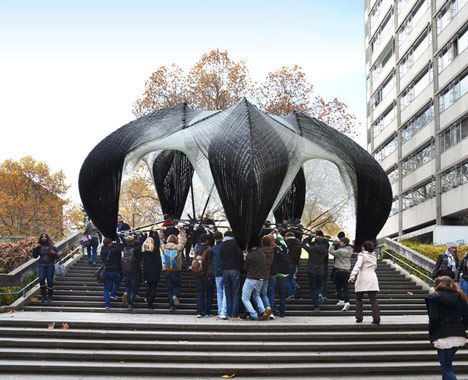
The structure of the pavilion was based on their research into the complex layers and load-bearing efficiency of a lobster's exoskeleton, which is made up of layers of chitin – a derivative of glucose – embedded in a protein matrix.

The digital model, although visually and formally complex, was fairly easy to generate thanks to the associative parametric software, which allowed many explorations to finally achieve the appropriate proportion and thickness of the structural ribs. Renderings of the nautilus models were chosen for the book cover, as one of the forms which best explains the main theme: how the geometry found in forms from nature can provide design models.
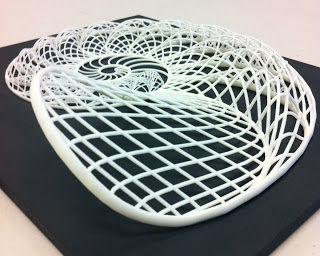
The digital model, although visually and formally complex, was fairly easy to generate thanks to the associative parametric software, which allowed many explorations to finally achieve the appropriate proportion and thickness of the structural ribs. Renderings of the nautilus models were chosen for the book cover, as one of the forms which best explains the main theme: how the geometry found in forms from nature can provide design models.

The digital model, although visually and formally complex, was fairly easy to generate thanks to the associative parametric software, which allowed many explorations to finally achieve the appropriate proportion and thickness of the structural ribs. Renderings of the nautilus models were chosen for the book cover, as one of the forms which best explains the main theme: how the geometry found in forms from nature can provide design models.